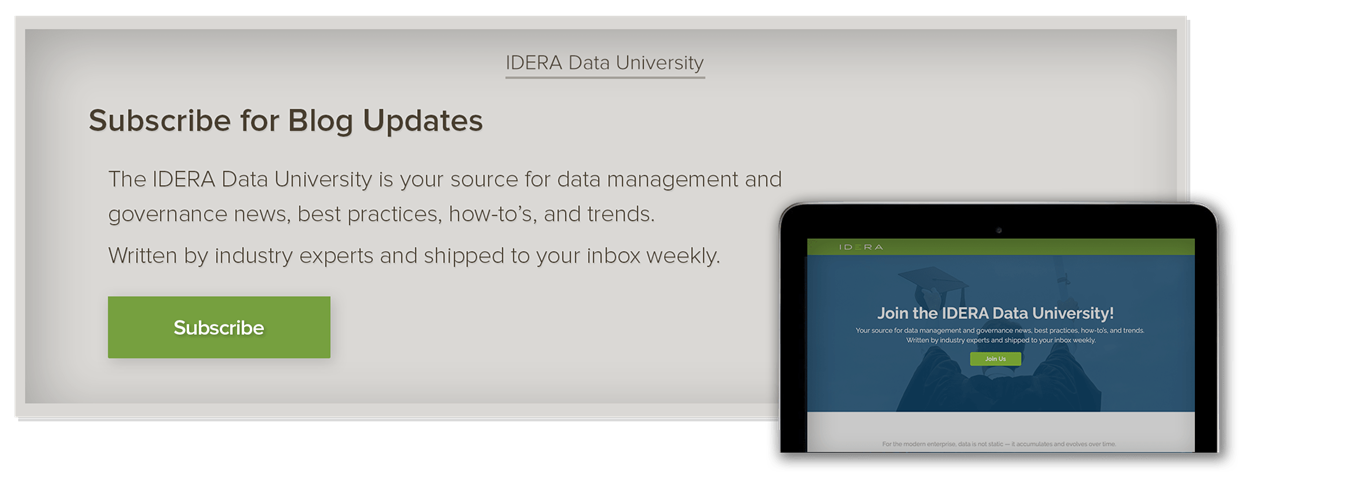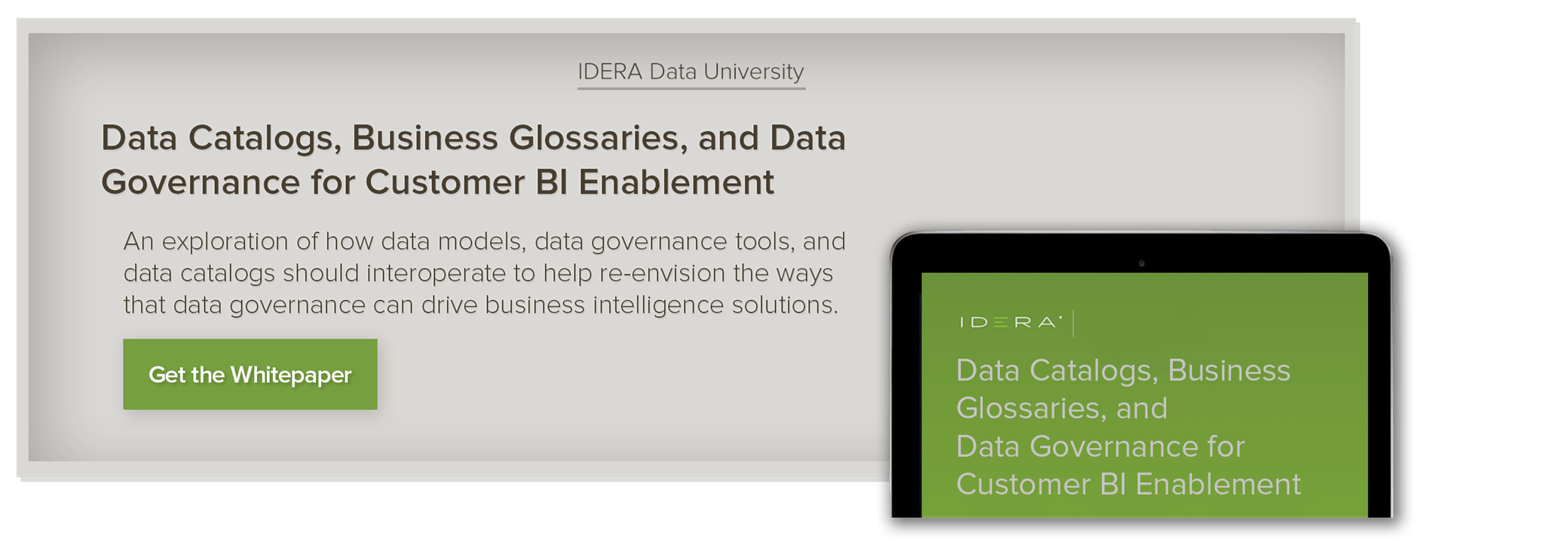A data governance framework is a means of standardizing the use of data within the enterprise. This includes its classification, organization, access, protection and communication.
It helps organizations maintain a consistent and comprehensive approach to data governance. Therefore, a framework contributes to improving the maturity of a company’s data governance program.
Organizations with a robust framework for data governance can more confidently comply with data regulations, and more effectively utilize their data to improve operations and drive revenue.
In modern business, data-driven organizations need to make the most efficient use of enterprise information resources. Data governance offers businesses a viable method for accomplishing this goal.
What is Data Governance?
Data governance is a rather nebulous term that can be defined in a variety of ways. Essentially, data governance is a set of principles and practices implemented to ensure high quality data is used throughout an organization.
The Data Governance Institute (DGI) defines the practice as “a system of decision rights and accountabilities for information-related processes, executed according to agreed-upon models which describe who can take what actions with what information, and when, under what circumstances, using what methods.”
A data governance initiative involves implementing policies and procedures that adhere to enterprise-specific standards intended to use an organization’s data resources effectively.
Therefore, data governance can often be viewed differently based on a company’s industry, data assets, and corporate culture. The objective in all cases is to develop best practices to maintain the quality, availability, security, and integrity of enterprise data resources.
Do I Need a Data Governance Framework?
As data’s importance to an organization has grown, so has the need for well-governed data. This is of course applicable to regulatory compliance requirements. However, it is also applicable to more value-adding use cases, as well governed data can be more easily used to increase revenue and profitability.
To encourage the success of a data governance program, a framework should be applied and adhered to.
While there is no standard data governance framework, implementing a framework for data governance in your enterprise helps standardize data use and access.
What’s in a Framework for Data Governance?
Every organization has its own requirements and nuances to consider, so the design and implementation of the framework is dependent on the organization, its data resources, and business requirements.
The critical characteristics of a framework address the “who”, “what”, “when”, “where” and “why” of data:
- Who – A data governance framework needs to define the roles individuals will play in implementing robust data governance. This encompasses everyone in the organization so they understand their responsibility in maintaining the quality of enterprise data and using it effectively.
- What – The type of organization and its unique information assets determine what data is in scope from the perspective of privacy, operational importance, and regulatory compliance. These are the data resources that will be most typically impacted by governance policies.
- When – Based on the industry and regulatory requirements of an organization’s data assets, the governance framework should define retention periods and address scheduling audits to ensure the proper security measures are in place.
- Where – The locations of all data resources must be identified so the appropriate processes can be implemented. Organizations have multiple data streams which may need to be handled differently in the overall scheme of a governance initiative.
- Why – The underlying reasons for implementing data governance need to be clarified and understood throughout the organization. The impetus for governance can be for a variety of reasons such as ensuring regulatory compliance, improving operational efficiency, and gaining insight into customer expectations.
Benefits of a Data Governance Framework
A viable framework provides several benefits to an organization. With a data governance framework, organizations can:
- Get all data stakeholders on the same page: The sometimes abstract nature of data governance and employee roles are defined in a framework, enabling everyone in the enterprise to be on the same page.
- Increase the understanding of your enterprise data: During the development of the governance framework, data assets are discovered providing an opportunity to fine-tune the program’s focus.
- Improve data governance maturity: With a comprehensive framework, organizations can move more quickly to achieve data governance maturity. The goal is for a business to evolve from an immature state where they are unaware of how to use data assets productively to a sophisticated understanding resulting in effectively using information to meet business objectives.
How to Implement a Data Governance Framework
Implementing data governance requires a combination of people, tools, and processes. There must be support for governance extending from upper management to every employee who interacts with enterprise data.
Candidates for roles such as that of data steward need to be carefully chosen so people with the right mindset and enthusiasm for governance can drive the initiative.
Collaborative tools are necessary for developing the policies and procedures needed to further governance throughout a company.
Adopting governance often requires a shift in corporate culture that includes the elimination of information silos and democratization of data resources. The result is the more efficient and productive use of enterprise data by all departments and employees.
Data governance is a complex undertaking that does not rely on a single tool or process. For it to be successful, everyone in the organization needs to be on board and pulling in the same direction.
IDERA’s Data Governance Solutions
IDERA’s data modeling solutions provide organizations with the tools necessary to implement data governance. The ER/Studio family of data modeling applications helps discover data assets, build business glossaries, and construct the foundation for data governance.
ER/Studio Business Architect
Business Architect is used to map the relationships between the people, processes, and data that need to be understood as a prerequisite to data governance. The tool enables teams to create conceptual data models to capture business objectives that can then be exported to ER/Studio Data Architect as the basis for logical data models.
Try ER/Studio Business Architect for Free!
ER/Studio Data Architect
ER/Studio Data Architect lets teams create logical and physical data models that can be used as the basis for data governance policies and procedures. Naming standards can be defined and enforced between multiple data models, introducing a level of consistency and facilitating collaboration between diverse parts of an organization.
Try ER/Studio Data Architect for Free!
ER/Studio Enterprise Edition
ER/Studio Enterprise Edition is designed to promote collaboration through the use of its model and metadata repository. The shared repository ensures consistency across data models and makes it easy to coordinate changes. Enterprise Edition can be used to build enterprise-wide business glossaries providing a common data vocabulary to be used throughout the organization. It furnishes a set of tools applicable to build the foundation of a viable data governance program.
Request a free demo of ER/Studio Enterprise Edition!
Organizations embarking on the road to data governance should strongly consider the features and benefits of ER/Studio. The tools will be an aid to governing data effectively so it can be used to meet the needs of the business.


